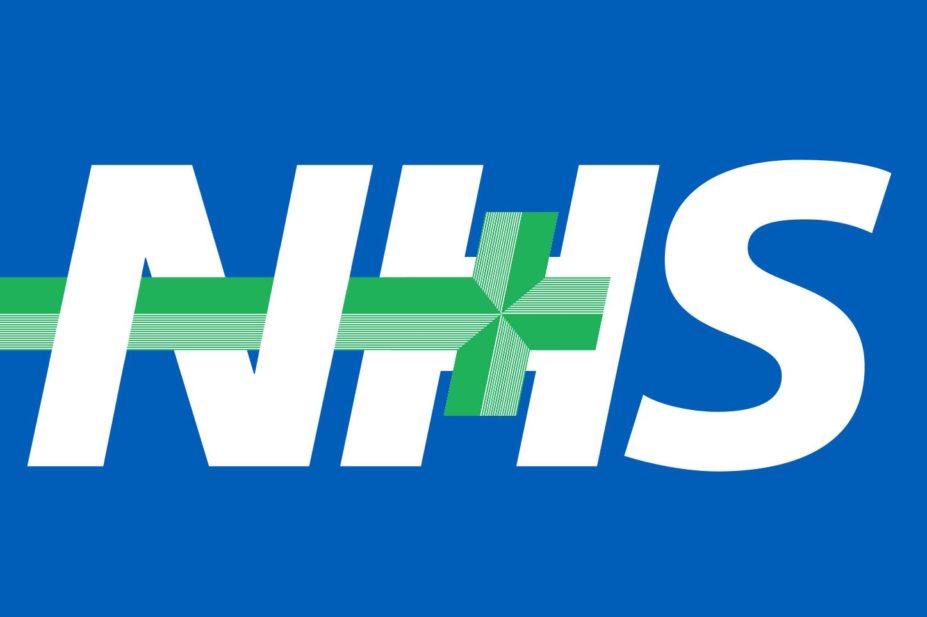
Mclean
I’m sure that most community pharmacists can’t wait for things to return to ‘normal’. But there’s no longer such a thing.
Global pandemics are game-changers. They force us to return to our core social values and find new ways of doing things, causing the world to emerge as a very different place.
Around 100 years ago, the Spanish flu pandemic, the end of the First World War and a financial crash collided — and pharmacy emerged transformed. Together, these events necessitated substantial changes in pharmacy, which led to the formation of the Retail Pharmacists Union (now the National Pharmacy Association), to represent pharmacists in employment, while the Pharmaceutical Society (now the Royal Pharmaceutical Society), set about redefining its role as the regulator of the profession[1]
.
In 2020, we face three new challenges — the COVID-19 pandemic, Brexit and another impending financial crisis — and these will be just as significant for the pharmacy of our time. They will force us to address some difficult and long-standing issues about pharmacy, including its place in society and how we pay for it.
Inseparable health and social care
The whole of society has been affected by COVID-19, but it was not until late April 2020 that COVID-19 deaths in care homes, hospices and the community were recorded alongside hospital deaths in the UK’s death toll[2]
. This was not only a political necessity, but a stark reminder that health and social care cannot be neatly divided according to their location. It was recognition of the fact that health and social care are intimately linked; that actions in one have consequences for the other[3]
. It also drew attention to the fact that — in England, at least — health and social care are supposedly unified through a single Department of Health and Social Care, but, practically, the two are distinct.
I predict that things will change, and here I present my vision for the future of pharmacy. The pandemic will ultimately result in the merging of publicly funded health and social care, with one budget; it will be delivered in a seamless way, with a single unified system of planning and delivery, provided by a single unitary local authority[4]
. There will, no doubt, remain a substantial private sector, with those who can afford it paying for a more luxurious service, as they do now for private hospital care, but a unified health and social care sector will have enormous implications for pharmacy, hospitals, GP surgeries and the community.
Key workers
Pharmacy staff have rightly been recognised as key workers during the pandemic, and many community pharmacies have extended existing services or even introduced new ones. Some have extended their opening hours to accommodate the limitations of social distancing; many others have extended home delivery services to the most vulnerable in society; and, from 1 May 2020, victims of domestic abuse have been able to use community pharmacies — including Boots pharmacy consultation rooms — as safe spaces across the country, where they have been able to contact specialist domestic abuse services for support and advice[5],[6],[7]
.
All of these developments are highly commendable and present pharmacy in a very positive light. They also demonstrate that pharmacies serve important social functions and provide a health service at the heart of the community. But new services and extended hours, once implemented, cannot easily be withdrawn. Once expectations have been raised, they do not simply recede.
As we emerge from the pandemic, I see pharmacy developments already under way being fast-tracked. For example, the Medicines and Medical Devices Bill, now at the Committee stage, provides the primary legislation to allow legally separate pharmacies to set up shared hub-and-spoke dispensing services, and this way of working is expected to expand in 2021[8],[9]
. And more than 1,000 full-time equivalent pharmacists are working across the country through the Clinical Pharmacists in General Practice programme, which in July 2019 was subsumed by primary care networks — a programme I also expect to expand rapidly[10]
.
Pharmacists in GP practices can arrange regular visits to care homes, residential homes and hospices, and they should develop the closest possible working relationships with the community pharmacists providing medicines and services to them[11]
.
Moving online
But existing programmes aren’t just going to get bigger; the way pharmacists deliver support will change too. The pandemic has demanded a big increase in telephone and video consultations with GPs, and people have found them effective, convenient and surprisingly easy to use[12]
. With social distancing set to continue for months and public transport out of bounds for many, patients can choose to consult from the comfort of their homes, rather than suffer the inconvenience and risk of travelling to the surgery[13]
. Post-pandemic, this type of consultation should expand, particularly for pharmacists based in GP practices, whose person-centred approach to medication reviews contributes to patient safety, and bridges the health and social care divide[14]
.
Online consultations are already being rolled out in community pharmacies in Scotland and Wales, and this could quickly become an expectation of the sector[15]
. Many patients with minor ailments neither need nor want to visit their GP surgery. However, they could soon expect to be able to book a video consultation at their local pharmacy, rather than travel to the pharmacy in person. And, if the pharmacist recommends a medicine, patients could increasingly expect home delivery too; a service many pharmacies are already offering.
Salaried, respected professionals
These services will no doubt benefit patients, but before we can implement them we need to address two elephants in the room once and for all: whether community pharmacy is part of the NHS while being on the edge of it, and whether pharmacy is more business than profession.
We should abandon current contract arrangements — based on the number of prescriptions dispensed and items of service delivered — which have their origin way back in 1911 from negotiations under the National Health Insurance Scheme[1]
. The pharmacists working for the future’s publicly funded health and social care sector will need to be salaried employees.
This way of remunerating pharmacists will release them to perform the wide range of services that society will increasingly expect of them, in the same way that hospital pharmacists and those working in GP practices already do.
These pharmacists won’t be paid according to the number of items they supply, the number of drug information queries they answer, or the number of patients they counsel about the use of newly prescribed items. They will do whatever is required of them by the service in return for a fair salary and will be treated as equals by their fellow healthcare professionals.
The real meaning of community
It remains to be seen how quickly and extensively these changes can take place. With greater dependence on telephone and online consultations, more home deliveries of medicines and the rapid implementation of hub-and-spoke dispensing, the need for expensive high street premises to provide state-funded pharmaceutical and medical supply services must slowly diminish[16]
. The expansion of hub-and-spoke dispensing will mean the bulk of dispensing is undertaken by teams of pharmacy technicians, under the supervision of pharmacists.
There will inevitably be fewer pharmacies on the high street and in supermarkets in the future. Those involved in the supply of NHS prescriptions, possibly dispensed elsewhere, will continue to sell GSL and P medicines — which could include those recommended by pharmacists based in GP surgeries.
This is not to say the concrete pharmacy will go away altogether — far from it. Such pharmacies will continue to be important social hubs in the community; they will provide immediate sanctuary to those in need and offer other frontline social care services to young people who have recently left care or to the elderly needing support, for example.
The idea of pharmacies providing social care, particularly to those at the margins of society, is, of course, nothing new. Many community pharmacists already have long-standing relationships with nursing homes, residential homes and care homes[17],[18],[19]
. However, the pandemic has also exposed the needs and vulnerabilities of other groups, including children in care, the homeless on the streets, and those whose misuse drugs. Yet here, too, many pharmacists have been providing needle and syringe replacement schemes and methadone dispensing services for many years[20],[21]
. It’s time to promote and fairly reward this social care culture in pharmacy.
A paradigm shift
And now could be our chance. The rate of permanent change accelerates in times of international crisis. When governments are already up to the hilt in debt, spending a few billion more to realise this change is suddenly possible. Expectations have been raised, and pharmacy must respond to the new reality.
Stuart Anderson, emeritus professor of pharmacy history, Centre for History in Public Health, London School of Hygiene and Tropical Medicine
References
[1] Holloway SWF. Royal Pharmaceutical Society of Great Britain 1841−1991: A Political and Social History. London: Pharmaceutical Press; 1991
[2] Booth R. The Guardian. 28 April 2020. Available at: https://www.theguardian.com/world/2020/apr/28/uk-records-4343-care-home-coronavirus-deaths-in-a-fortnight (accessed July 2020)
[3] Glendinning C. Health Policy 2003;65(2):139−151. doi: 10.1016/s0168-8510(02)00205-1
[4] The King’s Fund. 2014. Available at: https://www.kingsfund.org.uk/projects/commission-future-health-and-social-care-england (accessed July 2020)
[5] NHS Resolution. 2013. Available at: https://resolution.nhs.uk/wp-content/uploads/2019/03/NHS-Resolution-Opening-Hours-Guidance-Note.pdf (accessed July 2020)
[6] Co-op Pharmacy. 2020. Available at: https://www.cooppharmacy.coop/branch-pages/branch-pages/Coop-Pharmacy-Home-Delivery-Centre/ (accessed July 2020)
[7] Boots. 2020. Available at: https://www.boots-uk.com/our-stories/boots-pharmacy-consultation-rooms-become-safe-spaces-for-victims-of-domestic-abuse/ (accessed July 2020)
[8] Wickware C. Pharm J. 2020. Available at: https://www.pharmaceutical-journal.com/news-and-analysis/news/government-bill-could-enable-hub-and-spoke-dispensing-between-separate-pharmacies/20207714.article (accessed July 2020)
[9] Wickware C. Pharm J. 2020. Available at: https://www.pharmaceutical-journal.com/news-and-analysis/news/wider-hub-and-spoke-dispensing-expected-in-2021/20207748.article (accessed July 2020)
[10] NHS England. 2020. Available at: https://www.england.nhs.uk/contact-us/privacy-notice/how-we-use-your-information/public-and-partners/clinical-pharmacists-in-general-practice/ (accessed July 2020)
[11] Primary Care Pharmacy Association. 2020. Available at: https://pcpa.org.uk/open-access-resources.html (accessed July 2020)
[12] Greenhalgh T, Wherton J, Shaw S et al. BMJ 2020;368:m998. doi: 10.1136/bmj.m998
[13] NHS England. 2020. Available at: https://www.nhs.uk/using-the-nhs/nhs-services/gps/gp-online-and-video-consultations/ (accessed July 2020)
[14] British Medical Association. 2020. Available at: https://www.bma.org.uk/advice-and-support/gp-practices/employment-advice/employing-clinical-pharmacists-in-gp-practices (accessed July 2020)
[15] Burns C. Pharm J. 2020. Available at: https://www.pharmaceutical-journal.com/news-and-analysis/news/video-consultations-will-be-available-to-all-scottish-community-pharmacies-by-the-middle-of-june-2020/20208052.article (accessed July 2020)
[16] Bernd R. Eurohealth 2018;24(4):3−6. Available at: https://researchonline.lshtm.ac.uk/id/eprint/4650905/1/Rechel-2019-Hub-and-Spoke-Dispensing-Models.pdf (accessed July 2020)
[17] Hughes C & Lapane K. Ther Adv Drug Saf 2011;2(3):103−112. doi: 10.1177/2042098611406167
[18] Schweizer A & Hughes C. Pharm World Sci 2001;23(5):195–199. doi: 10.1023/a:1012296713896
[19] Schweizer A & Hughes C. Pharm World Sci 2004;26:346−352. doi: 10.1007/s11096-004-1409-y
[20] Sawangjit R, Khan T & Chaiyakunapruk N. Addiction 2017;112(2):236−247. doi: 10.1111/add.13593
[21] Strang J, Sheridan J & Barber N. BMJ 1996;313:272. doi: 10.1136/bmj.313.7052.272


